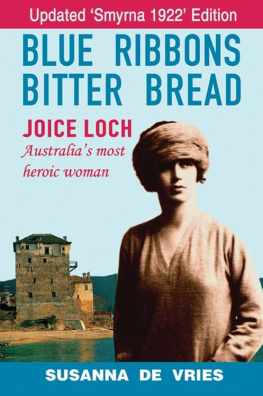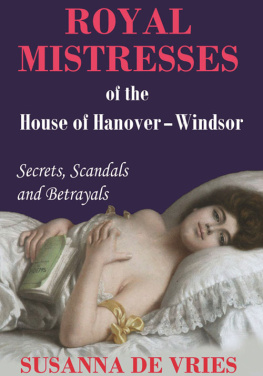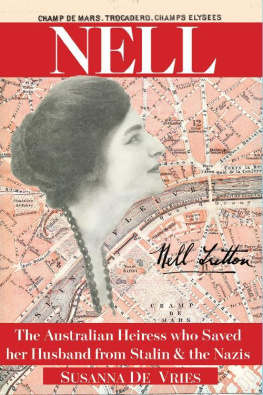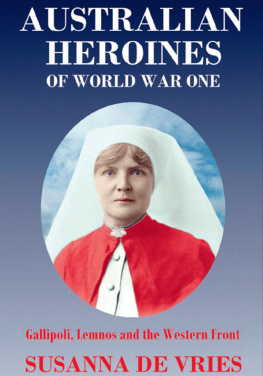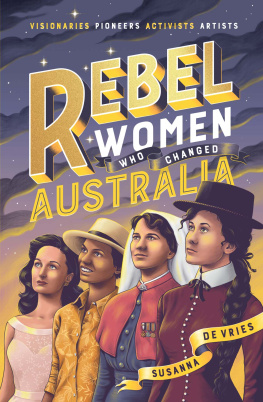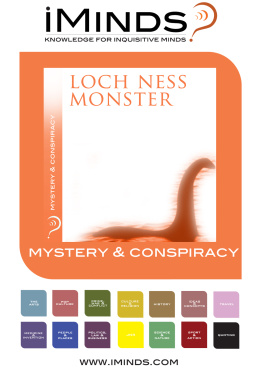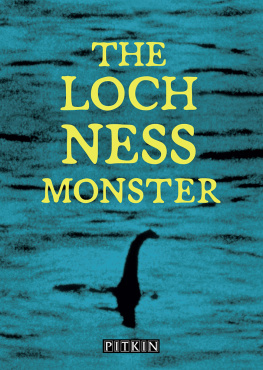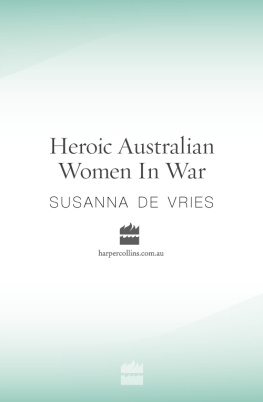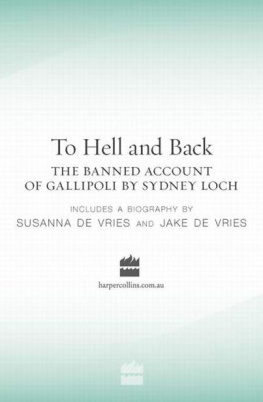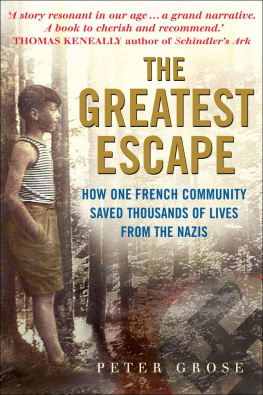Susanna De Vries - Blue Ribbons Bitter Bread: Joice Loch - Australias Most Heroic Woman
Here you can read online Susanna De Vries - Blue Ribbons Bitter Bread: Joice Loch - Australias Most Heroic Woman full text of the book (entire story) in english for free. Download pdf and epub, get meaning, cover and reviews about this ebook. year: 2017, publisher: Pirgos Press, genre: Non-fiction. Description of the work, (preface) as well as reviews are available. Best literature library LitArk.com created for fans of good reading and offers a wide selection of genres:
Romance novel
Science fiction
Adventure
Detective
Science
History
Home and family
Prose
Art
Politics
Computer
Non-fiction
Religion
Business
Children
Humor
Choose a favorite category and find really read worthwhile books. Enjoy immersion in the world of imagination, feel the emotions of the characters or learn something new for yourself, make an fascinating discovery.
- Book:Blue Ribbons Bitter Bread: Joice Loch - Australias Most Heroic Woman
- Author:
- Publisher:Pirgos Press
- Genre:
- Year:2017
- Rating:4 / 5
- Favourites:Add to favourites
- Your mark:
Blue Ribbons Bitter Bread: Joice Loch - Australias Most Heroic Woman: summary, description and annotation
We offer to read an annotation, description, summary or preface (depends on what the author of the book "Blue Ribbons Bitter Bread: Joice Loch - Australias Most Heroic Woman" wrote himself). If you haven't found the necessary information about the book — write in the comments, we will try to find it.
This unforgettable story has become an Australian classic describing how an Australian bush girl saved the lives of 1,000 Polish and Jewish children in a daring escape from the Nazis. This updated edition contains an important eye-witness account of the burning of Smyrna (Izmir) causing a vast number of deaths. The authors father, a young British naval officer, saved hundreds of Greeks from the blaze that destroyed their beautiful city and many of them would be cared for by Joice Loch in a Greek refugee camp and later in the refugee village of Ouranoupolis, now a holiday resort.
Joice Loch was an extraordinary Australian. She had the inspired courage that saved many hundreds of Jews and Poles in World War II, the compassion that made her a self-trained doctor to tens of thousands of refugees, the incredible grit that took her close to death in several theatres of war, and the dedication to truth and justice that shone forth in her own books and a lifetime of astonishing heroism.
Born in a cyclone in 1887 on a Queensland sugar plantation she grew up in grinding poverty in Gippsland and emerged from years of unpaid drudgery by writing a childrens book and freelance journalism. In 1918 she married Sydney Loch, author of a banned book on Gallipoli. After a dangerous time in Dublin during the Troubles, they escaped from possible IRA vengeance to work with the Quakers in Poland. There they rescued countless dispossessed people from disease and starvation and risked death themselves.
In 1922 Joice and Sydney went to Greece to aid the 1,500,000 refugees fleeing Turkish persecution. Greece was to become their home. They lived in an ancient tower by the sea in the shadows of Athos, the Holy Mountain, and worked selflessly for decades to save victims of war, famine and disease.
During World War II, Joice Loch was an agent for the Allies in Eastern Europe and pulled off a spectacular escape to snatch over a thousand Jews and Poles from death just before the Nazis invaded Bucharest, escorting them via Constantinople to Palestine.
By the time she died in 1982 she had written ten books, saved many thousands of lives and was one of the worlds most decorated women. At her funeral the Greek Orthodox Bishop of Oxford named her one of the most significant women of the twentieth century.
This classic Australian biography is a tribute to one of Australias most heroic women, who always spoke with great fondness of Queensland as her birthplace. In 2006, a Loch Memorial Museum was opened in the tower by the sea in Ouranoupolis, a tribute to the Lochs and their humanitarian work.
Susanna De Vries: author's other books
Who wrote Blue Ribbons Bitter Bread: Joice Loch - Australias Most Heroic Woman? Find out the surname, the name of the author of the book and a list of all author's works by series.

